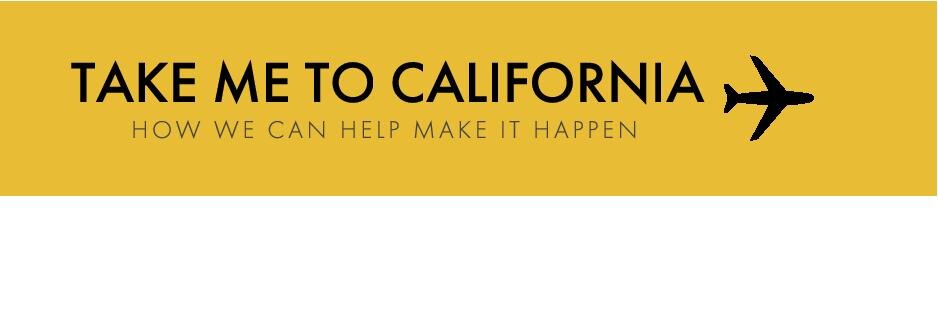FACT FILE
STATE CAPITAL Sacramento
NICKNAME The Golden State
POPULATION 39.56 million
TIME ZONE GMT-7
CURRENCY US dollar ($)
ELECTRICITY 120v 60Hz
STATE FLAG
The grizzly bear (California’s official state animal) represents strength and is set against a white background (purity) above a red line (courage); the star signifies sovereignty
FLIGHTS TO CALIFORNIA
From the UK, British Airways, Virgin Atlantic and United fly direct daily from Heathrow to San Francisco (which is where our Big Trip California itinerary starts), whilst Norwegian (normally by far the cheapest fares) flies direct to San Francisco from Gatwick.
From Ireland, Aer Lingus flies direct daily from Dublin to San Francisco.
From elsewhere in the US, you can fly direct daily to San Francisco (flying into either Oakland or San Francisco itself) from dozens of airports on domestic carriers such as Alaska Airlines, American Airlines, Delta, Frontier Airlines, jetBlue, Spirit Airlines and United.
From Canada, you can fly direct daily to San Francisco with Air Canada from Toronto, Montreal, Calgary, Edmonton and Vancouver; United also fly direct daily from Toronto, Calgary and Vancouver, whilst WestJet fly direct daily from Calgary and Vancouver.
You can search for the most convenient routes and the best fares at Skyscanner. Flight times to San Francisco International Airport (SFO), 13 miles south of the city, and to Oakland International Airport (OAK), across the Bay, are just over 11 hours from London and Dublin, 6 hours 15 minutes from New York and Montreal, 5 hours 30 minutes from Toronto and 2 hours 30 minutes from Vancouver. BART trains are the best way to get into Downtown (30 minutes).
VISAS AND PASSPORTS
UK, Irish and Canada passport holders can enter the USA on a Visa Waiver Program. This does, however, require applying in advance for an ESTA (Electronic System for Travel Authorization), which will grant you a stay of up to 90 days ($14). This needs to be done online at least 72 hours before your flight, though it’s better to tick this off when you’re booking your trip (ESTAs are valid for 2 years from the date of authorization). Citizens of these countries need only have a passport that is valid for their intended period of stay. Entry requirements do change, however, so check the latest with the US Customs and Border Protections website.
HEALTH AND SAFETY IN CALIFORNIA
California is a very safe state to visit. Aside from than the inoculations that are part of the routine childhood immunisation programme in the UK (ie diphtheria, tetanus, polio), no immunisations are required. The US has no national healthcare system, though, and medical bills are extremely costly, so it’s vital that you take out sufficient travel insurance for your trip.
Summer temperatures can regularly top 30 degrees Celcius – often over 40 degrees in Death Valley – so protect yourselves from the sun and make sure that everyone drinks plenty of water. This extreme heat means California is often susceptible to wildfires (there were over 7850 wildfires across the state in 2019 alone), though these are well publicised and monitored closely.
California has some wonderful wildlife, but remember that Yosemite National Park is home to black bears and mountain lions, although you’re unlikely to spot one; Death Valley (which has its own particular set of hazards) provides the desert habitat favoured by rattlesnakes and scorpions.
As in any big city, you need to take sensible precautions in parts of San Francisco and, in particular, Los Angeles, where several neighbourhoods (Watts, Crenshaw, Compton, Skid Row in Downtown) should be avoided altogether.
GETTING AROUND CALIFORNIA
By far the best way of getting around California is by car. This is classic road-trip territory, and the stretch of the Pacific Coast Highway that links Los Angeles and San Francisco is one of the world’s great drives. Auto Europe compares the best rates between nearly a dozen car-rental companies that between them have pick-up locations at San Francisco International Airport and at over 25 offices across the city. Insurance is a must, so make sure you’re suitably covered by the company’s Collision Damage Waiver (CDW); and as you’ll be covering a lot of ground, you should also check that free unlimited mileage is included. The speed limit is 55mph on two-lane highways and 65mph on multi-lane freeways, reduced to 25mph in residential areas. Parking at hotels in the big cities can mount up if it’s not included in your accommodation, but you’ll only have to do this in Los Angeles.
California is also a great place to rent a motorhome or RV (recreational vehicle), a novel experience for kids and one that allows you to camp out in the wilds of Yosemite and in many of the state’s other wonderful national and state parks. Rental costs are much higher than for cars, though you do make some savings on accommodation. One important point to note, though, is that most RV rental companies will prohibit you from driving your motorhome through Death Valley in summer.
Getting around the big cities varies. San Francisco has a good public transport network made up of the Bay Area Rapid Transit, or BART, trains; streetcars, cable cars, buses and metro, run by the San Francisco Municipal Transportation Agency and all classed together as the Muni; and ferries. Several single- and multi-day passes are available, such as the Muni 3-Day Pass (also available as an app) and the Clipper Card. Although Los Angeles has a substantial public transport system, mostly run by Metro, it’s not particularly convenient for the places you’ll want to visit on our itinerary, and most people drive around the city or take a taxi; if you’ve not got a rental car, then Uber and Lyft are easy apps to use for ordering cabs.
GIVING SOMETHING BACK
Los Angeles Mission Based near the infamous Skid Row in Downtown LA, this non-profit organization provides shelter, meals and clothing, as well as a number of educational services, to some of the city’s 50,000-plus homeless people.
National Park Foundation Official non-profit partner of the National Park Service, helping protect wilderness areas, historical sites and places of cultural significance, and funding campaigns aimed at getting more American children outdoors.




